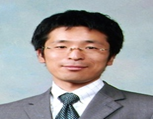Conference Schedule
Day1: March 28, 2019
Keynote Forum
Adam Voelkel
Poznan University of Technology, Poland
Title: Inverse gas chromatography in the examination of aluminasilicate/resin composites

10:00-10:30
Biography
Abstract
Hiroyuki Aoki
J-PARC Center, Japan Atomic Energy Agency, Japan
Title: Structure and dynamics in ultra-thin films of poly (alkyl methacrylate) prepared by spin-coating method

10:30-11:00
Biography
Abstract
Tracks
- Recent Developments in Polymer Synthesis | Polymer Physics and Characterizations | Stereochemistry of Polymers | Biopolymers and Biomaterials | Bioplastics | Biodegradable Polymers | Polymer Nanotechnology | Polymer Science | Polymer Engineering
Location: Olimpica 1
Zuzanna Buchwald
Poznan University of Technology, Poland
Title: Experimental resin-based composites with alternative fillers

11:15-11:40
Biography
Abstract
Tsukasa Miyazaki
Comprehensive Research Organization for Science and Society (CROSS), Neutron Science and Technology Center, Japan
Title: Relationship between the peel strength and microdomain orientation in the interfacial region for a block copolymer-based pressure-sensitive adhesive
11:40-12:05
Biography
Abstract

12:05-12:30
Biography
Abstract

12:30-12:55
Biography
Abstract
Wael Mahmoud Ahmed Darwish
National Research Centre, Egypt
Title: Fluorescent (polymer-dots) bioconjugates for cancer theranostic applications
13:55-14:20
Biography
Abstract
Pourya Zarshenas
Shahid Beheshti University, Iran
Title: Detection of Hg ions in contaminated water by optical sensor based on polymeric nanocomposite
14:20-14:45
Biography
Abstract
14:45-15:10
Biography
Abstract
Rahima S Mammadova
Azerbaijan State Pedagogical University, Azerbaijan
Title: Analysis of polymer compositions obtaining methods
15:25-15:50
Biography
Rahima S Mammadova is the Head of the New biological active compounds scientific-research laboratory at Azerbaijan State Pedagogical University. Currently, she is working on the thesis of Doctor of Sciences in Chemistry and continues research on the content and properties of biologically active polymer compositions. Her research interests include analysis of polymer compositions obtaining methods, research on the content and properties of biologically active polymer compositions.
Abstract
Sheta Mohamed,
National Research Centre, Egypt







